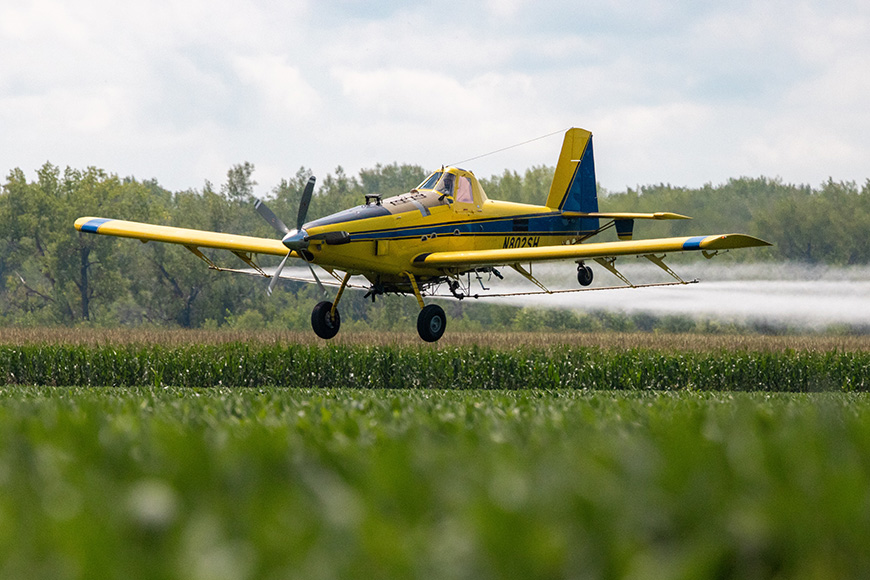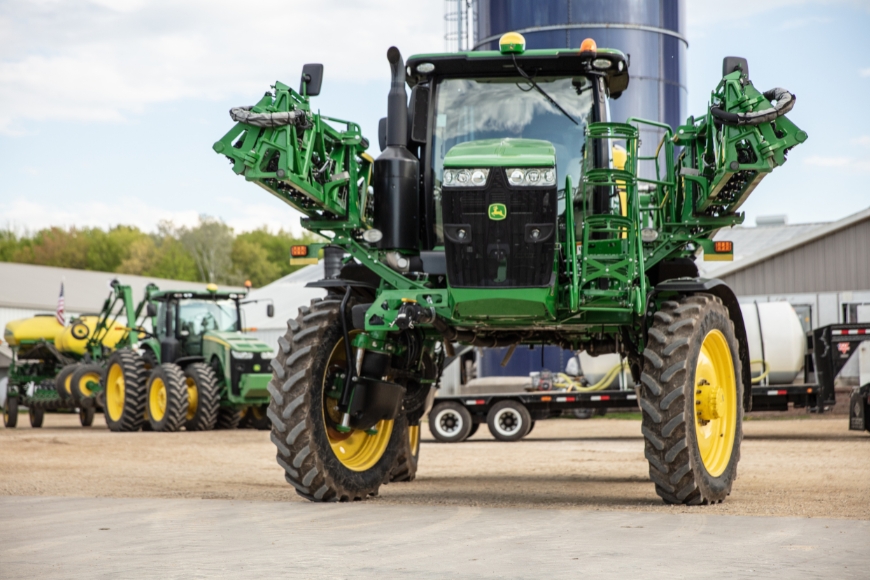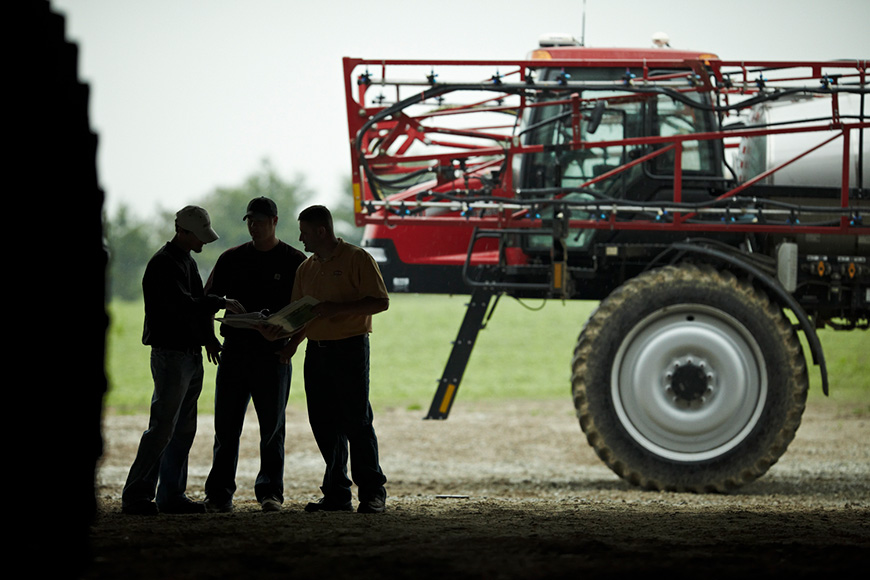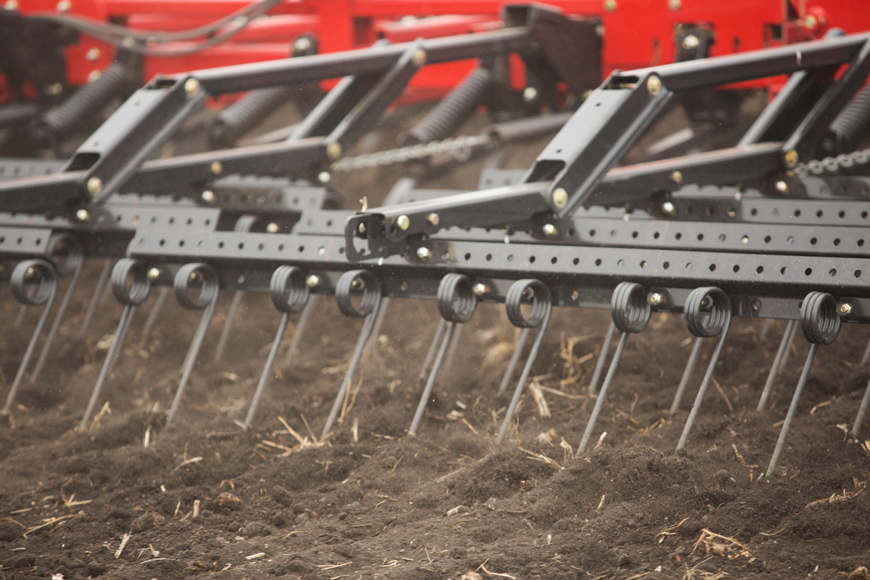3 Factors to Consider for Aerial Applications

Applying crop protection products by airplane can be a smart choice for several reasons. Once you have a plane booked, it’s fast and efficient. You can also avoid the compaction from a ground rig and get to fields high-clearance machinery can’t. Plus, it’s one of the most feasible ways to apply fungicide to corn around tassel.
Like any spray application, however, applying aerially requires strategic choices to maximize effectiveness. Make sure you have these three factors sorted with your applicator before they take to the sky.
1. Droplet Size
Droplet size is just as important with aerial application as it is with ground application. However, for a ground application, droplet size decreases as pressure increases. For an aerial application it’s the opposite. As pressure increases, droplet size increases.Establishing the right droplet size is critical because it impacts both coverage and efficacy as well as drift and evaporation potential. Too fine and droplets could drift off target in the breeze or evaporate before the plant can take them up. Too coarse and you lose coverage potential and precision. Nozzle type, plane speed and water volume can all impact the droplet size.
2. Water Volume
Speaking of water volume, it is one of the most influential factors that impacts coverage, and it’s very different for ground versus air. While an airplane applies around 2 gallons per acre, a ground sprayer will apply up to 20 gallons per acre.In general, higher water volumes lead to better coverage, especially in dense crop canopies where thorough coverage is essential. With the lower water volumes of aerial applications, it’s important to work with your trusted advisor to find the right balance, especially considering your unique topography and environmental conditions.
3. Tank Mix
With an aerial application especially, when coverage is already limited by the amount of water being used, a product like MasterLock® adjuvant can help keep that small, valuable solution volume from drifting off course to help ensure more product makes it to the target. In fact, 14 studies testing all fungicides via ground rig applications showed MasterLock adjuvant plus fungicide resulted in a 5.7-bushel per acre average yield increase in corn compared to using a fungicide alone.1To get even more out of your aerial application, you can also add nutrient sources like MAX-IN® Ultra ZMB® Plus micronutrient, which provides an optimal blend of critical nutrients that are often deficient in corn and soybeans: zinc, manganese and boron.
For corn fungicide applications at VT or soybean applications at R1-R3, you may even consider a bio-based product like YieldON® biostimulant, which helps move sugars and nutrients to the ear or pod late-season, for increased seed weight. We’ve seen great results from timely YieldOn applications, which is why it also received the WinField® United BioVerified™ designation.
The WinField United Innovation Center
We continue to research high-speed application strategies in our advanced wind tunnels at the WinField United Innovation Center. The Spray Tech 2 wind tunnel has two sections. In the bottom, we can put entire boom section in to measure field-scale situations. In the top, we have high-speed settings we can use to measure these aerial application scenarios. Our research teams are currently building robust testing procedures that will reveal new management and product performance insights in the future.For more information on aerial applications or to schedule a tour of the WinField United Innovation Center in River Falls, Wisconsin, contact your local retailer.
1WinField United. 14 studies, eight states, all fungicides. 2012–2017.
All photos are either the property of WinField United or used with permission.
© 2024 WinField United. Important: Before use always read and follow label instructions. Crop performance is dependent on several factors many of which are beyond the control of WinField United, including without limitation, soil type, pest pressures, agronomic practices and weather conditions. Growers are encouraged to consider data from multiple locations, over multiple years and to be mindful of how such agronomic conditions could impact results. BioVerified, MasterLock, MAX-IN, WinField and ZMB are trademarks of WinField United. All other trademarks are the property of their respective owners.





